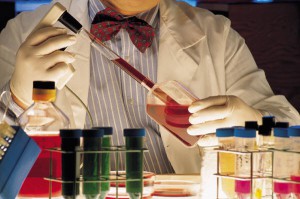
That cancer risk increases with age is a statistical truth. But does this mean that cancer is inevitable, as George Johnson recently suggested in the New York Times? In an article that has generated a fair amount of debate, the author of The Cancer Chronicles implies that cancer might be a necessary part of a larger plan.
“The rhetoric about the war on cancer implies that with enough money and determination, science might reduce cancer mortality as dramatically as it has with other leading killers – one more notch in medicine’s belt. But what, then, would we die from?”
Like many others, Johnson seems to believe that the simple act of living longer gives cancer cells more time to develop. The very nature of cell replication opens the door to cancer in what Johnson calls “the result of a basic evolutionary compromise.”
“As the body lives and grows, its cells are constantly dividing, copying their DNA. … They in turn pass it to their own progeny: copies of copies of copies. Along the way, errors inevitably occur.”
When the body fails to repair these genetic “glitches,” cancer cells can develop. “As people age their cells amass more potentially cancerous mutations,” Johnson says. “Given a long enough life, cancer will eventually kill you.”
Johnson does recognize that progress against cancer is being made. “New immune system therapies that bolster the body’s own defenses have shown … promise,” he notes, also mentioning the potential of targeted genetic therapy and nano robots to advance the cancer fight to the next level. But at the end, even if we can extend our lives into a second century, Johnson believes, “waiting at the end will be cancer.”
Next time: A different view: Hope IS warranted





